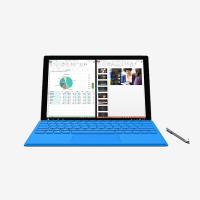As someone who works online and loves to travel, I have always been a fan of lightweight laptops.
I have purchased many lightweight computers over the years and used to regularly read blogs about the latest portable devices coming out of Japan.
I use a desktop for my main work when I’m home and a laptop for working whilst travelling. The laptop is also used on holidays and weekends away. It is also used to do light work when watching films on the couch (i.e. work that does not need 100% of my attention).
The laptop is essential to me working online. I can survive without a desktop computer, but I cannot work efficiently without the use of a laptop.
My Love of Portable Computers
The only heavy laptop I have ever purchased was the 15.4″ Asus G1S laptop. It weighs a whopping 3.2kg but that was bought specifically as a desktop replacement so it was never moved away from the desk. I still have the laptop and it still runs well ten years later (though I have notregularly used it in years).
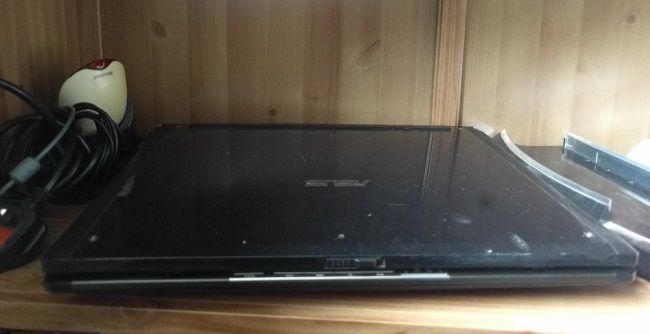
One of the first portable laptops I purchased was the 10.5″ Sony Vaio VGN-T2XP which weighed 1.4kg. It was incredibly lightweight compared to other laptops on the market at the time which is why it cost me thousands of dollars.
I purchased the laptop in the USA in 2005 and I was still using it when I went travelling for a year in 2006/2007 to Thailand, Australia, New Zealand, Japan, and Germany. It is now common for people to take laptops with them when they travel but back then it was so unusual that I do not recall ever meeting anyone else who had one with them. Everyone just used internet cafes to email home. Granted, I was one of the few people making a living online and travelling.
Later laptop purchases included the 7″ Asus EEE PC (0.9kg), the 8.9″ HP 2133 Mininote (1.27 kg), and the sexy 12.1″ Sony Vaio VGN-TZ31MN (1.19kg).
Four years ago I picked up a second hand 12.5″ Lenovo X220 for only £500 to replace the Sony Vaio TZ3. Packing a core i5 2520M sandy bridge processor and 4GB of RAM into a 1.3kg laptop, I upgraded the RAM in the Lenovo X220 to 8GB and replaced the sim card module with an M4 Sata drive to improve performance.
The laptop has been one of my best purchases. I took this laptop all around South America and it survived all the bumps and scrapes I threw at it.
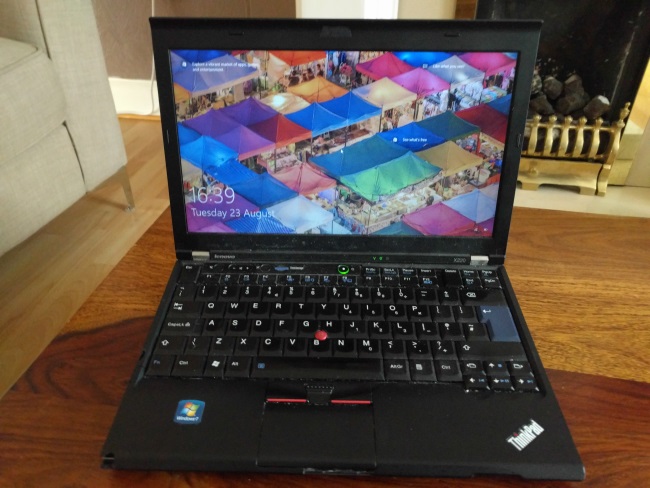
I still use the X220 regularly. It is an efficient computer that can handle everything an internet marketer needs. It always runs well regardless of whether Photoshop is open or whether I have twenty tabs open in Chrome.
The one area it did struggle was video. The older two core i5 processor struggled with the CPU intensive requirements of Adobe Premiere Pro CC and its 1,366 x 768 made editing a real pain. Whilst I can do video editing on the Lenovo X220, it’s small screen and sluggish performance in Adobe Premiere Pro CC meant that video editing was just not practical.
Due to this, I wanted to buy a newer laptop that could handle everything I needed to do.
The laptop I chose was the Microsoft Surface Pro 4.
The Microsoft Surface Pro 4
I have owned the Surface Pro 4 for around two weeks now and so far I have been really impressed by it.
It’s a hybrid device that can be used as a tablet or as a laptop. Powered by Windows 10, the Surface Pro 4 comes with a stylus pen that can be switched from tablet mode to laptop mode at any time.
I do not see myself using the stylus often, however the touchscreen is fantastic. I love being able to pull the detachable type cover keyboard off and sitting back and using it as a tablet to browse and watch videos. I truly believe this is the future of computing as there is no real need to own a tablet and a laptop if one device can be used as both.
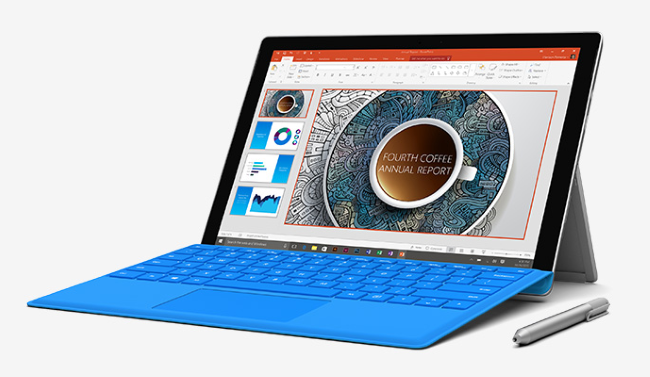
Admittedly, the range of apps available for Windows mobile is quite limited. This is not a major concern for me as there are still some fun mobile games available such as Asphalt 8 and since the Surface Pro 4 is a fully functional PC, you have a huge catalogue of games at your disposal.
There is an option for me to play my Playstation 4 through the Surface Pro 4 and I will be able to play classic Command and Conquer games and other classics via Steam.
The kickstand allows the screen to be viewed at any angle. This allows the Surface to work in the same way as a laptop. It works really well in practice.
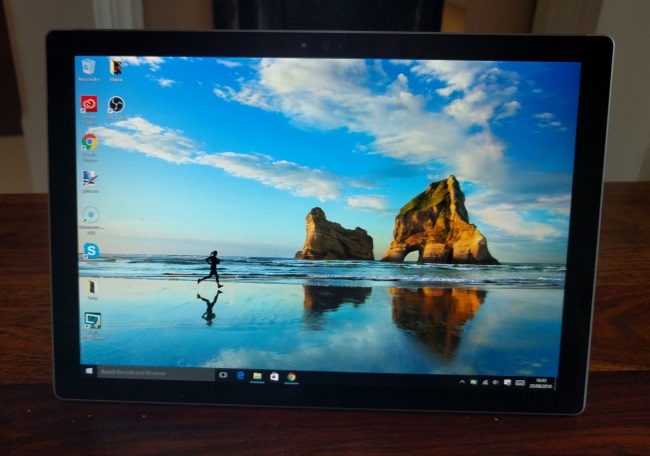
The type cover keyboard is amazing. It attaches in a split second using magnets. The only thing I would have loved is if the keyboard had bluetooth. This would have allowed me to sit the screen down and type further back from it. As it stands, the keyboard needs to be directly attached just like a laptop. In the future I suspect we will see bluetooth added since some rival devices include it.
The keyboard also works like a cover. It can be flipped round to the back if you want to use the Surface Pro in tablet mode or placed on the front and act as a cover. It will not replace a good case as far as protection goes, but I love the way it works.
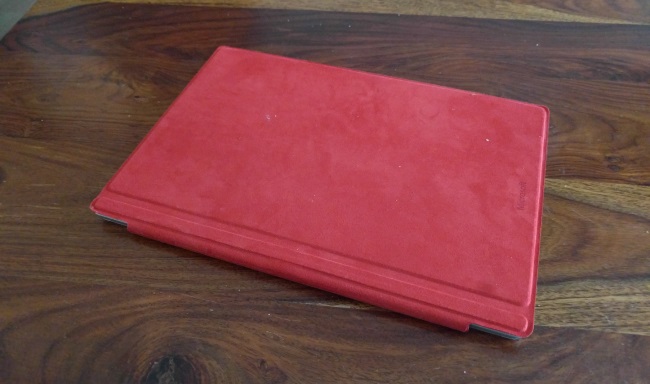
The Surface Pro 4’s screen is only two inches shorter in diamater than my Lenovo X220, but it is much smaller and lighter. It weighs less than 0.8kg on its own and only less than 1.1kg with the type cover keyboard attached.
My older Asus G1S is a behemoth next to the Surface Pro 4, yet the Surface Pro 4 has a fantastic resolution of 2,736 x 1,824 pixels at 267 pixels per inch while the older G1S has a resolution of 1,680 x 1,050 pixels.
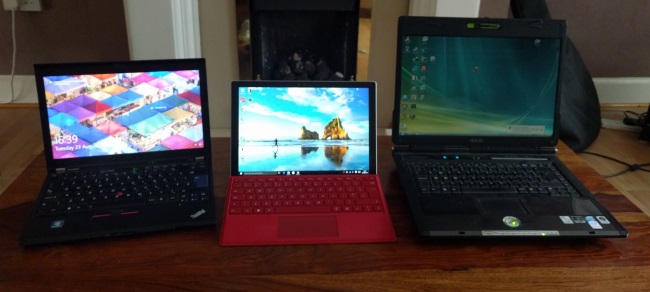
In the video below I give my first impressions of the Surface Pro. It shows you the main features of the laptop.
If you are wanting a comprehensive overview of what the laptop can do, I recommend checking it out.
The video below illustrates the benefits of the type cover keyboard. The keyboard is unfortunately an expensive accessory that is not included with the Surface Pro 4. It retails for around £100 in the UK, but Amazon was selling the red version for only £69.99 temporarily so I managed to save some money.
One of the first challenges I threw at the Surface Pro 4 was video editing. The version of the Surface Pro 4 I purchased has an i7 processor, 16GB of RAM, and a 1GB Iris HD graphics card.
I assumed that this would have meant that video editing would have been a breeze. Whilst the laptop can handle video editing, it is not as good as I had hoped.
The sixth generation i7 6650U CPU that is in the Surface Pro 4 is clocked at 2.2GHz and can go up to 3.4GHz with turbo boost. It’s a dual core CPU with four threads.
I have edited several videos on it already, but playback inside Adobe Premiere Pro CC can be a little choppy at times. I had assumed that the 1GB graphics card inside it would have helped avoid that, but I later found that Premiere Pro CC uses the CPU and does not utlise the graphics card. This is why my late 2009 27″ iMac with a 2.66GHz i5-750 CPU with four cores performs better in this regard.
The high resolution of the Surface Pro 4 really helps with video editing. When the CPU is going full at 3.4GHz the fans kick in and make the laptop louder than usual, but video playback is better.
You can get a better idea of how video editing performs on the Surface Pro 4 in the video below.
Another thing that I have been pleased about is the microphones and cameras on the device. The front facing camera is 5MP and the back camera is 8MP and both work really well. The microphones will not replace a dedicated USB or XLR microphone, but they are good enough for Skype calls and screencast video tutorials.
Check out the Surface Pro 4 microphones and cameras in the video below.
The one thing I still need to find is a suitable case for the Surface Pro 4. The laptop is so light and delicate that I’m always concerned about the device being scraped or damaged.
The first case I purchased was the Kensington BlackBelt™ 2nd Degree Rugged Case. It was a good case, though it was perhaps a little too bulky for my needs.
In the end I decided to return the case because the thickness of the case stopped USB flash drives from working on the Surface Pro 4. Since there is only one USB port on the device, I had to return the case.
I will keep searching for a better solution for protection as I want to keep the device in good condition.
Initially I was planning on selling my older Lenovo X220 laptop, however I decided against this when I saw how little money I would get for it. You can pick up a refurbished Lenovo X220 for only £150 now. I would be lucky to get that amount for mine since one of the USB ports is broken; despite the fact I added additional RAM and an M4 Sata drive upgrade.
The Lenovo X220 is still a very capable machine so it is worth me keeping it as a backup device in case something happens to my Surface Pro 4. Selling it does not make sense as I would struggle to get £100 and I would not be able to get a good replacement at that price.
Final Thoughts
Within the making money online world, most people choose Apple products such as the Macbook Pro and Macbook Air for working online.
Despite owning an iMac, I do not believe that it is worthwhile paying the Apple premium as there are so many cheaper Windows alternatives with better specifications.
So far I am very happy with the Surface Pro 4. It does everything I have wanted it to do and over the last two weeks I have used it every single day for blogging, emailing, browsing the web, watching YouTube videos, playing games, editing videos for YouTube, and much more.
If you are on the lookout for a versatile solution for your next laptop, I recommend checking it out. I also recommend paying attention to the Surface Pro 5 that will be announced in the next few months.
Thanks for reading.
Kevin

